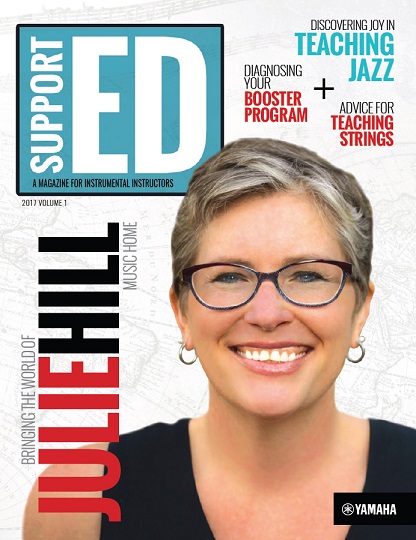Tagged Under:
Is Your Booster Program Healthy?
Regularly check on the health of your parent booster organization to foster a healthy partnership, which will benefit your students and your music program.
Ever notice the energy and excitement we all feel when we anticipate the arrival of a new calendar year? I enjoy those times! The opportunity to start fresh is exhilarating. As you complete one season of your orchestra and band program and look forward to the start of another, the timing seems right to conduct an annual or biannual checkup of your parent booster organization. This diagnosis can often lead to a healthier overall partnership.
When was the last time your parent board sat down with you to determine goals and objectives for the coming school or calendar year? If it took you longer than two seconds to remember, you’re overdue for a booster shot.
Work on a Plan
I am a big proponent of planning. Whenever the Association of Music Parents (AMP) is called on to assist a band booster program, my most frequent reply is: “Show me your plan.”
Planning meetings help open lines of communication and encourage everyone to get on the same page. They support honest, productive dialogue. They expose organizational weaknesses while capitalizing on opportunities to seize.
Playing it by ear is a dangerous way to manage a booster organization. Clearly defined goals and action plans must be established to plot strategies in the areas of fundraising, public relations, marketing, special events, travel, volunteer recruiting and involvement, logistics and much more.
Share Your Vision
Before group planning starts, you, as the instrumental music director, must sit down with your booster president to share your vision of where you see the program going.
After this conversation, you and the booster president should have similar meetings with all of the organization’s officers. Communication between the director and officers is an essential step to building the healthy band booster program that you want and that your parent volunteers desire.
Welcome Productivity
Author Paul J. Meyer once said of productivity: “Productivity is never an accident. It is always the result of a commitment to excellence, intelligent planning, and focused effort.”
So as you begin to check the health of your band booster program, please remember that the examination shouldn’t be one to dread or avoid. Rather, it should be one you and your booster officers and the other parent volunteers gladly welcome as you elevate the excellence and service of your program.
Checkup Checklist
AMP recommends that you discuss the following questions in a positive, honest, realistic and non-threatening environment:
- What activities did our music parent organization undertake that worked well and didn’t work so well, and why?
- Of these activities, are there any we should attempt again or not, and why?
- How can the music director and band booster organization work collaboratively to become better advocates for our children’s music program?
- How well does the booster organization recruit and retain volunteer members? Are there any new opportunities or ideas we should consider?
- How well do we engage band, choir or orchestra alumni in the program? Do we have a defined role for them?
- How well do we communicate with our music parent organization’s membership, the school and school district, and local community? Where and how can improvements be made?
- How professional are we in planning and executing fundraising projects? Where do we succeed, and where can improvements be made?
- How do we develop and mentor volunteer leadership? How can improvements be made?
- How can the band booster organization best assist the music director in the months ahead?
- How do we make it fun and meaningful for parents and community members to belong?
This article originally appeared in the 2017 V1 issue of Yamaha SupportED. To see more back issues, find out about Yamaha resources for music educators, or sign up to be notified when the next issue is available, click here.

















